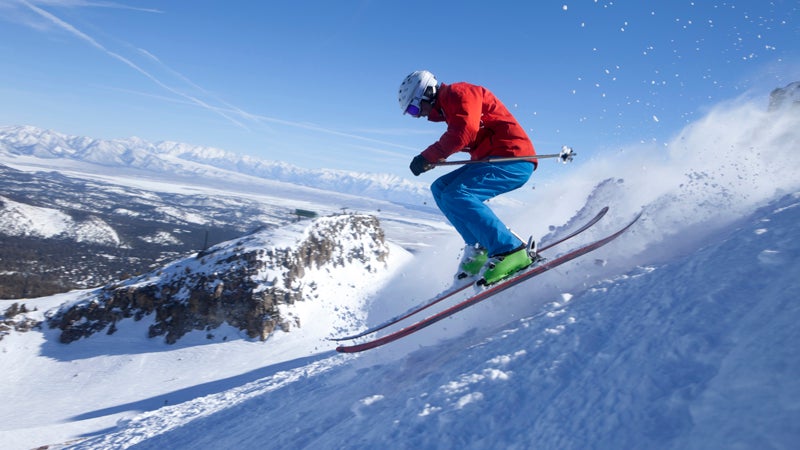Sandwiched between trailers and a steel storage container, headquarters don’t exactly scream state of the art.
 The author’s new skis
The author’s new skisBut when you step into the showroom, you’ll find the most unique ski collection you’ll likely ever see. A corridor with peeling green paint gives way to a handmade-ski factory that looks like it’s part science lab, part ski tech shop, and part industrial kitchen.
I first spoke with Pete Wagner, owner of Wagner Custom Skis, three months prior to my visit. The company was building a pair of boards for me and I’d just finished filling out an extensive set of online forms for the process. Wagner called to follow up and we’d ended up having a 41-minute discussion on what I wanted from the skis.
For a ski tech nerd like myself, preparing for that conversation was heaven. I broke down how I skied, where I skied, and what specific design features I was looking for. (Wagner told me he was excited about my skis six times.) I felt like I was in a bar talking to a buddy about my dream boards, the difference being these were going to become a reality.
Wagner, who used to design high-end golf clubs, then plugged that information into a sophisticated software program he created, turning my yapping into two working pieces of art. How do they ski? I’ll get to that in a bit.
In eight years, Wagner has transformed his custom ski businesses into a tiny powerhouse. He attributes his success both to his proprietary software and his ability to listen carefully to what his clients want. Wagner believes so strongly in his products that he’ll completely rebuild any pair of skis that a customer is unhappy with. Last year Wagner produced over 1,000 pair of skis. He only replaced four.
I felt this pedigree when I skied the boards Wagner built for me. They did every single thing I asked for in exactly they way I wanted it done. They didn’t chatter in the crud. They felt comfortable at speed on groomers, yet still had a tight enough turn radius to ski well in the trees. They had enough float to feel like I was cheating in the powder, yet still maintained enough stiffness to open up on giant slalom turns.
In short, they’re pretty much perfect. And while you certainly pay for that perfection (the skis can cost more than $2,000), Wagner claims the skis will last up to three times longer than your average boards because of the materials he uses.
While I still haven’t put that durability claim to the test, I do know this: I love these skis. They were made for me and I feel it with every turn.


